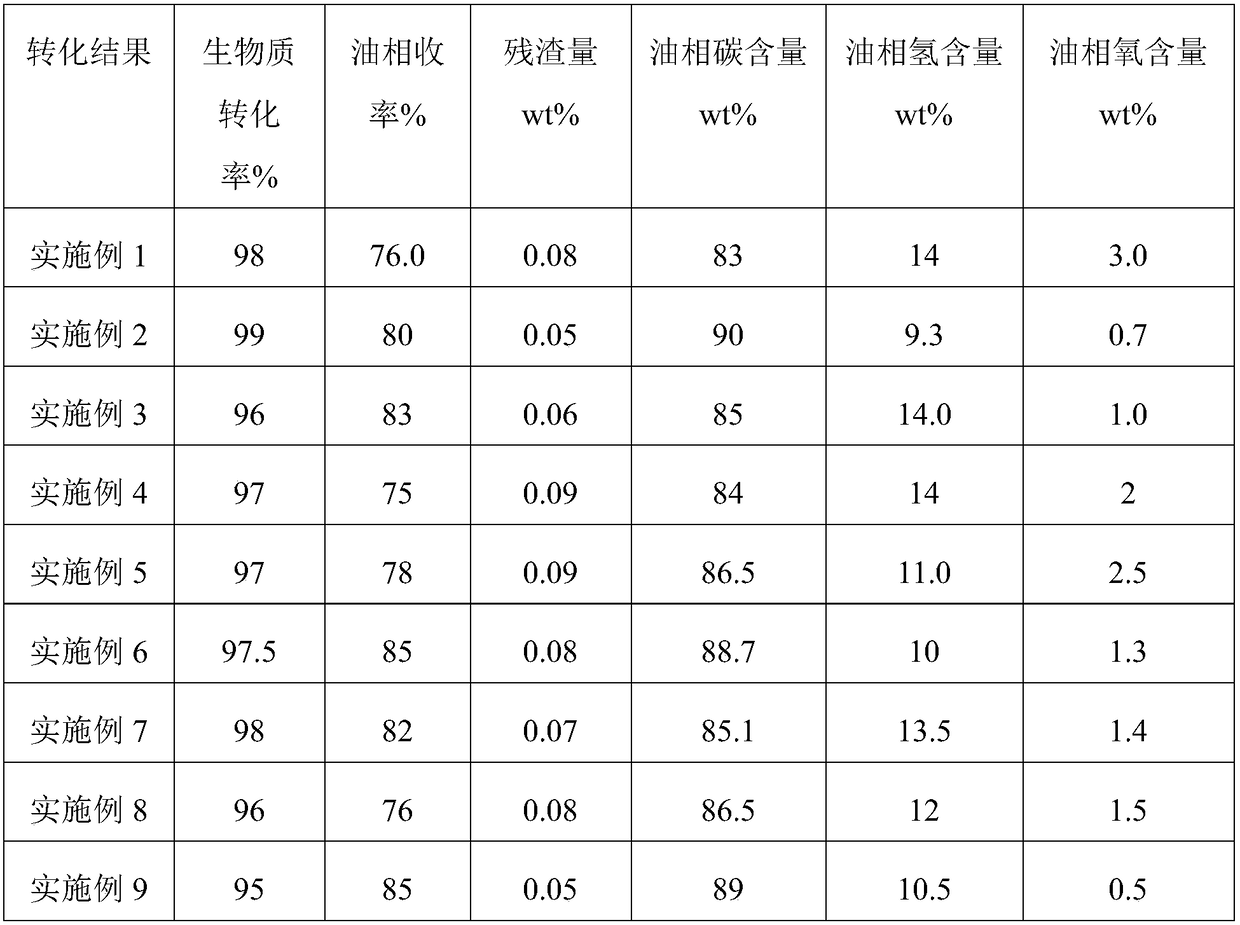One-pot liquefaction process of biomass
A biomass and biomass pretreatment technology, applied in the field of one-pot liquefaction of biomass, can solve the problems of high energy consumption, low amount of biomass transported by pumps, and unstable transportation, so as to achieve volume reduction and achieve stable Operation and transportation, to achieve the effect of smooth flow
- Summary
- Abstract
- Description
- Claims
- Application Information
AI Technical Summary
Problems solved by technology
Method used
Image
Examples
Embodiment 1
[0045] A one-pot liquefaction process of biomass, comprising the steps of:
[0046] Biomass Pretreatment
[0047] Put the palm oil residue into the drier and dry at 80°C for 5 hours until the water content is lower than 2wt%, and then send it into the superfine pulverizer for primary crushing. The median particle size after primary crushing is 100 μm, and then the primary crushing The palm oil residue is sent to the plodder for compression extrusion molding at a temperature of 50 °C and a pressure of 5 MPa, and then for secondary crushing. The median particle size after the secondary crushing is 30 μm. After the secondary crushing The bulk density of palm oil residue is 1600kg / m 3 ,spare.
[0048] Catalyst preparation
[0049] S1. After the biochar is acidified, a biochar carrier is obtained;
[0050] S2. Vibrating and grinding the oxide of Mo and the above-mentioned biomass carbon carrier to obtain the biomass carbon loaded with Mo oxide with a particle size of 400-500...
Embodiment 2
[0059] A one-pot liquefaction process of biomass, comprising the steps of:
[0060] Biomass Pretreatment
[0061] Send the linseed oil residue and peanut oil residue into a drier and dry at 110°C for 6 hours until the water content is lower than 2wt%, and then send them into an ultrafine pulverizer for primary crushing. The median particle size after primary crushing is 300 μm, and then The primary crushed linseed oil residue and peanut oil residue are sent to the plodder for compression extrusion molding at a temperature of 58°C and a pressure of 3MPa, and then secondary crushing is performed. The median particle size after the secondary crushing is 50 μm. The bulk density of linseed oil residue and peanut oil residue after secondary crushing is 1500kg / m 3 ,spare.
[0062] Catalyst preparation
[0063] S1. After the biochar is acidified, a biochar carrier is obtained;
[0064] S2. After the oxides of W, the oxides of Fe and the above-mentioned biomass charcoal carrier ...
Embodiment 3
[0073] A one-pot liquefaction process of biomass, comprising the steps of:
[0074] Biomass Pretreatment
[0075] Put saponin oil residue and rapeseed oil residue into a drier, dry at 100°C for 2 hours until the water content is lower than 2wt%, and then send it to an ultrafine pulverizer for primary crushing. The median particle size after primary crushing is 210 μm, Then the saponin oil residue and rapeseed oil residue after primary crushing are sent to a briquetting machine for compression extrusion molding at a temperature of 40°C and a pressure of 4MPa, and then secondary crushing is carried out. The particle size is 40 μm, and the bulk density of saponin oil residue and rapeseed oil residue after secondary crushing is 1561kg / m 3 ,spare.
[0076] Preparation of biochar loaded with Mo oxide and Pd oxide
[0077] S1. After the biochar is acidified, a biochar carrier is obtained;
[0078] S2. Vibrating and grinding Mo oxides, Pd oxides, and the above-mentioned biomass...
PUM
| Property | Measurement | Unit |
|---|---|---|
| particle size | aaaaa | aaaaa |
| particle diameter | aaaaa | aaaaa |
| particle diameter | aaaaa | aaaaa |
Abstract
Description
Claims
Application Information
 Login to View More
Login to View More - R&D
- Intellectual Property
- Life Sciences
- Materials
- Tech Scout
- Unparalleled Data Quality
- Higher Quality Content
- 60% Fewer Hallucinations
Browse by: Latest US Patents, China's latest patents, Technical Efficacy Thesaurus, Application Domain, Technology Topic, Popular Technical Reports.
© 2025 PatSnap. All rights reserved.Legal|Privacy policy|Modern Slavery Act Transparency Statement|Sitemap|About US| Contact US: help@patsnap.com

